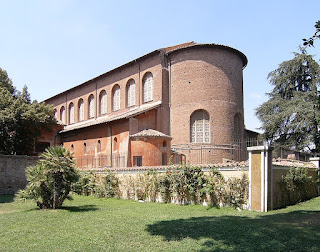How the dry white from the Veneto earned its DOC status
 |
| Soave from the famous Bolla vineyard |
The DOC status - which stands for Denominazione di Origine Controllata - was introduced midway through the last century as part of a series of laws designed to safeguard the quality and authenticity of Italian wines.
Winegrowers had been pushing for such regulation because the increasing popularity of Italian wines around the world was impacting on quality as more and more producers sprang up to meet demand.
Soave was a case in point. Originally limited to a small area of just 2,720 acres (1,100 hectares) in the hills to the north of the small towns of Soave and Monteforte d'Alpone, roughly 25km east of Verona in the Veneto region, production spread rapidly to an area more than six times as large.
The biggest demand was from the United States, which developed a taste for Italian wines in the boom years that followed the end of the Second World War. Of the huge volume of imported bottles that arrived on ships from Europe, Soave was the most popular.
Its reputation then was that of a fine, high quality wine, not unlike France's Chablis in style - pale coloured, lively and refreshing and with crisp mineral flavours and a clean finish.
However, mass production led to a decline in quality. Grapes grown on the flatlands in the expanding production zone did not yield wine of the same character as those grown on the hillsides, and more and more liberties were taken with the blend of grapes used.
 |
| Soave is produced using the Garganega grape |
Swanky restaurants began to drop it from their wine lists and the knock-on effect was soon felt by wine merchants, too, as customers looked for exclusivity elsewhere.
A similar tipping point was also reached in the United Kingdom and Soave's popularity began to wane, with Pinot Grigio taking its place as the favourite among Italian whites.
Although the area in which Soave makers could obtain DOC status after 1968 reflected the expanded production zone, strict rules on the blend had to be followed. Garganega grapes had to make up between 70 and 100 per cent and Trebbiano di Soave between 0 and 30 per cent.
 |
| The beautiful rolling hills near Verona where Soave is made |
Since the DOC classification came into being, two further indicators of provenance have been introduced. Wines of the highest quality can qualify for the certification category Denominazione di Origine Controllata e Garantita (DOCG), while wines that do not adhere exactly to the DOC guidelines but are nonetheless judged as of good quality can be awarded an IGT (Indicazione Geografica Tipica) certificate.
Recent signs are that Soave is regaining some of the market share lost to Pinot Grigio. More sophisticated and reliable production methods have led to higher quality wines, with subtle variations in taste relating to the location of the vineyard underpinning the crisp, non-acidic freshness.
Older wine connoisseurs are still tending to give it a wide berth but a new, younger generation of wine drinkers are discovering it afresh, tiring of Pinot Grigio, still enjoying the fashionable Sauvignon Blancs of Australia and New Zealand but finding Soave a pleasing alternative that is a little easier on the pocket.
 |
| The 10th century house at the centre of Soave Castle |
Soave, a small municipality of fewer than 10,000 inhabitants, is notable for its castle, which enjoys a commanding location overlooking the town. Originally built in the 10th century to protect the area against the Hungarians, it was added to in the 14th and 15th centuries and has three lines of walls. It was bought privately in the 19th century and restored, and is now open to the public, with several rooms of exhibits, including a dining room with medieval kitchenware. The poet Dante Alighieri is said to have stayed there as a guest of the Scaligeri family, who were part of a noble Veronese dynasty.
Travel tip:
Nearby Verona, which sits astride the Adige river, is regarded as one of Italy's most beautiful cities. It attracts hundreds of thousands of visitors whose sole aim is to find the 14th century house in the centre of the city where the balcony overlooking a courtyard was made famous by Shakespeare's play Romeo and Juliet, which he based on stories of Verona's warring Montague and Capulet families. But there is much more to the city, which has a fascinating network of narrow medieval streets, some fine churches, handsome squares and impressive Roman ruins, the most famous of which is the vast Arena amphitheatre, designed to accommodate 30,000 spectators and now a major venue for music concerts and opera.
(Photo of Soave landscape by Alessandro Pighi CC BY-SA 4.0)
(Photo of Soave Castle by Casalmaggiore Provincia CC BY-SA 4.0)
Home


























